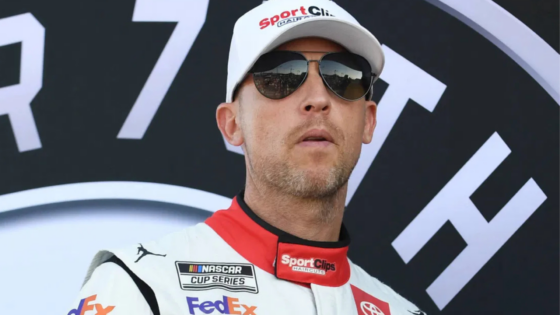As teams packed up after the last race in Mexico City, the paddock was noticeably lighter both in spirits and, for some, in overall health. Among those watching the unfolding scene was Denny Hamlin, a fixture in NASCAR and a driver with dozens of career victories to his name, renowned for his resilience in both triumph and challenge. Hamlin’s experiences on and off the track have given him a keen perspective on the sport’s evolving landscape and the behind-the-scenes realities that often escape the spotlight.
NASCAR’s push into international territory, highlighted by the Mexico City event, carried promises of excitement and unique hurdles. But as the season progressed, subtle cues strained crew faces, logistics headaches, and stories relayed to veteran winners like Hamlin hinted that the challenges were stacking up. Now, as news breaks that NASCAR will not return to Mexico City next season, Hamlin’s candid take on the real factors at play draws the industry’s focus.
Dollars, decisions, and denny: the real story behind Mexico City’s NASCAR exit
Denny Hamlin didn’t hold back in clarifying the driving force behind NASCAR’s change in plans. “No tacos for me. Bummer,” he started, acknowledging the buzz of disappointment, before drilling into the reality. “Usually, this stuff comes down to money. Let’s all be honest. Maybe someone’s bid wasn’t what it needed to be, or they didn’t sell as many tickets, and so the return from that was not enough. It’s always money,” he said candidly, putting the speculation to rest on why the series would pivot back to familiar ground like Chicagoland.
But beyond finances, Hamlin explained in a recent episode of Actions Detrimental, he laid bare the operational and human challenges that compounded the situation. “I can tell you from the team standpoint, we are like wiping our foreheads. Like Mexico was very, very challenging. Logistically. Uh, very, very tough on our race teams to prepare the cars,” he revealed. The preparation for the race involved moving equipment and cars “a week, ten days in advance,” a demanding timeline that disrupted the usual rhythm and added strain to crews.
“Not only the task of that, but the task it had on everyone’s stomach when they got back home. Man they were they were a lot of sick people. Lots. I mean, I know of five to six that were in really really bad shape.” Hamlin stressed. That’s significant for a sport that relies on precision and focus. This illness wasn’t an isolated inconvenience; it affected performance and safety. Many drivers and crew struggled with lingering effects into the next race weekend.
“Some of the drivers still were not feeling well the following seven days. So yeah, I don’t know. You just uh body’s not quite used to that, the types of food or water, I don’t know.” Hamlin acknowledged, pointing to the difficulty in adapting to local food, water, or environmental factors. This layer of human cost added another dimension to the decision-making process, showing that the race’s viability went beyond financials.
Denny Hamlin’s transparency in discussing these behind-the-scenes realities reveals the multifaceted nature of race scheduling decisions. While fan enthusiasm and international expansion may drive ambitions, the balance of cost, logistics, and health forms the underlying framework that ultimately decides a race’s future. His insights offer a necessary counterpoint to the public narrative, highlighting the practical challenges that teams and organizers face when venturing beyond traditional venues.
The road ahead: Chicagoland’s return and the future of NASCAR scheduling
With Mexico City in the rearview mirror, Hamlin’s thoughts turned to the announcement of Chicagoland returning as a replacement. The transition, in his view, comes with its own set of opportunities and familiarity. “Good. I think that’ll put on a good race. Um, it’s a wide mile and a half. Typically, that’s been the one type of racing that’s been pretty good,” Denny reflected on the merits of the venue. While the shift signals one less international road course and one more classic oval, Hamlin suggested that the racing product could benefit as a result.
There’s an undercurrent of relief among teams, given the less grueling logistics and the predictable infrastructure at legacy U.S. tracks. Chicagoland brings with it a fan base accustomed to NASCAR’s rhythm and fewer questions about the basics from prepping equipment to post-race recovery. The oval’s wide layout is conducive to overtaking and close competition, returning the series to one of its competitive sweet spots and minimizing off-track distractions.
In the bigger picture, Hamlin’s comments and the strategic choice to move away from Mexico City signal NASCAR’s broader balancing act between expanding its global reach and maintaining operational efficiency. The lessons learned from this Mexico City experiment will likely inform how the league approaches international events moving forward.
Financial viability, team well-being, and fan experience must align for global races to succeed. As NASCAR continues to weigh its schedule, Hamlin’s insights provide a reality check, reminding fans and officials alike that racing is about more than just the spectacle; it’s about putting on a sustainable show, wherever the checkered flag drops.
The post Denny Hamlin Opens Up About NASCAR’s Mexico City Exit Plans appeared first on EssentiallySports.
